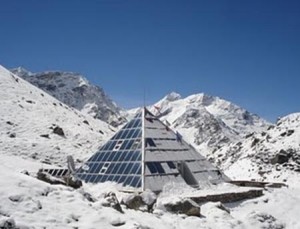Mt Everest Weather
By Michael FaginMt. Everest Weather, Trekking EverestMt Everest Weather- The world’s highest weather station, the South Col site is named after its location: the windswept, relatively snow-free pass between Mt. Everest and Lhotse, the Earth’s tallest and fourth tallest peaks. Sometimes erroneously called the Earth’s third pole, Mt. Everest hosts about a hundred climbs per year- a number that has been increasing. Across the treacherous landscape, there remain about a hundred and twenty unrecovered corpses. The South Col weather station operated from May 5 to August 26 1998. For this research, the asynchronous measurements were scanned for outliers and then converted into 6-hourly mean values for the period of the station’s operation.
This data has taught us much about high-altitude, Himalayan weather, including patterns of barometric pressure, temperature, relative humidity, wind speed and solar radiation. Raw data from at least thirty measurements per day was adjusted using per-established calibration curves and transmitted to a base at MIT via the ARGOS satellite. Assembled on the satellite is another instrument called a Total Ozone Mapping Spectrometer, which subsequently measured the region’s total atmospheric column depth and identified intrusions of stratospheric air into the upper troposphere during significant weather events by observing displaced stratospheric ozone.
From May 2007 to September 2008, six automated weather observation stations were operational along the mountaineering line of the northern slope of Mt. Qomolangma between 17,083’ – 21,522’ (5,207 – 6,560 m.) The data sets told what appears to be the region’s typical weather story. At low elevations, the dominant winds are katabatic (from peaks to valleys.) At least in the Rongbuk Valley, they blow about 59% of the time. In the summer, up-valley wind erodes the katabatic wind and also directional consistency. The katabatic wind weakens with height due to the smaller fetches of the increasingly open landscape and the concomitant temperature contrast. During the winter, up-valley winds are more frequent and almost persistent higher up. From November to March, synoptic-scale westerly troughs generally dictate the winds and affect the southern end of the valley, especially the higher elevations.
The Pyramid site is now the only active weather station in the region and located at 16,700 feet.
Meteorologist Geoff Linsley

